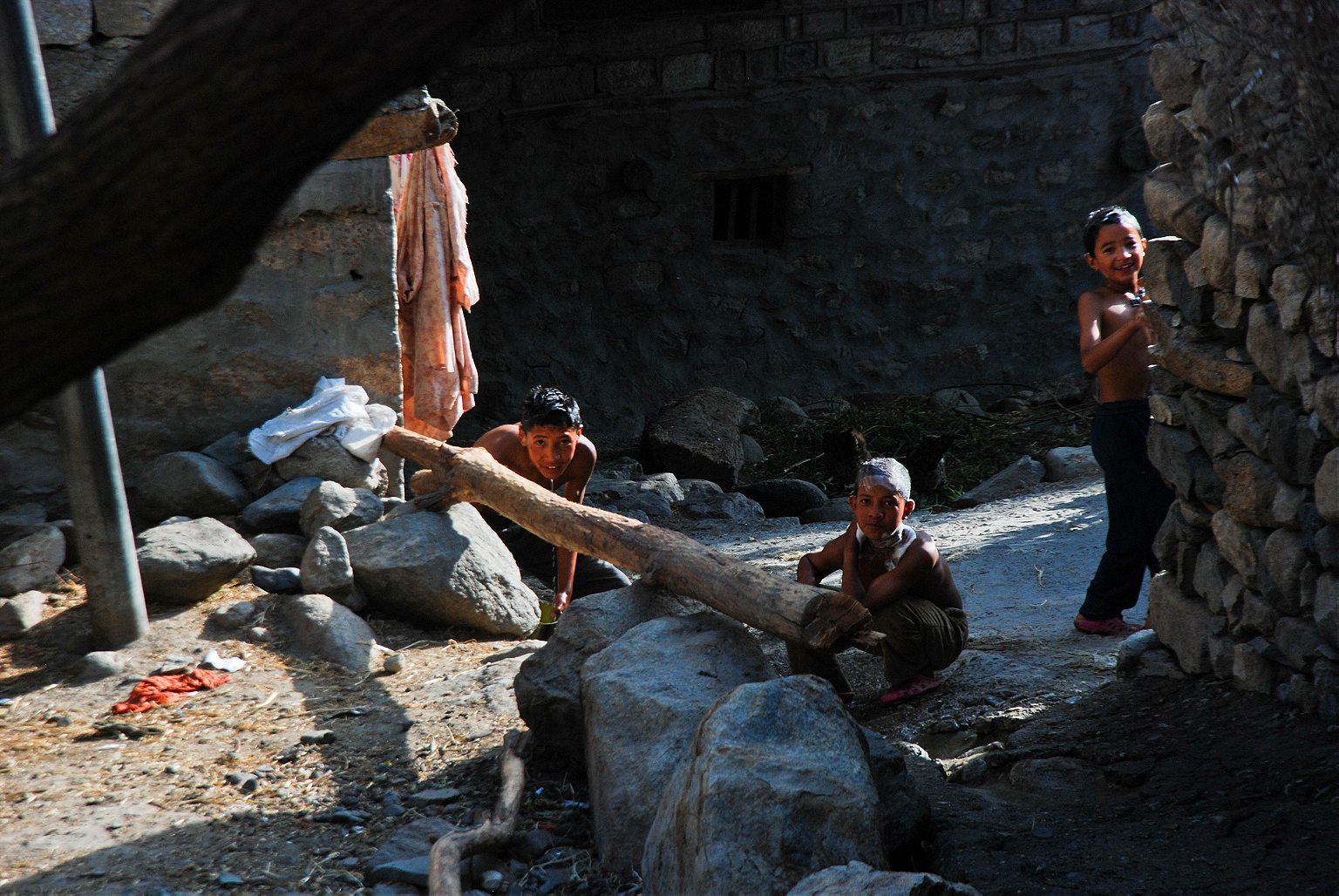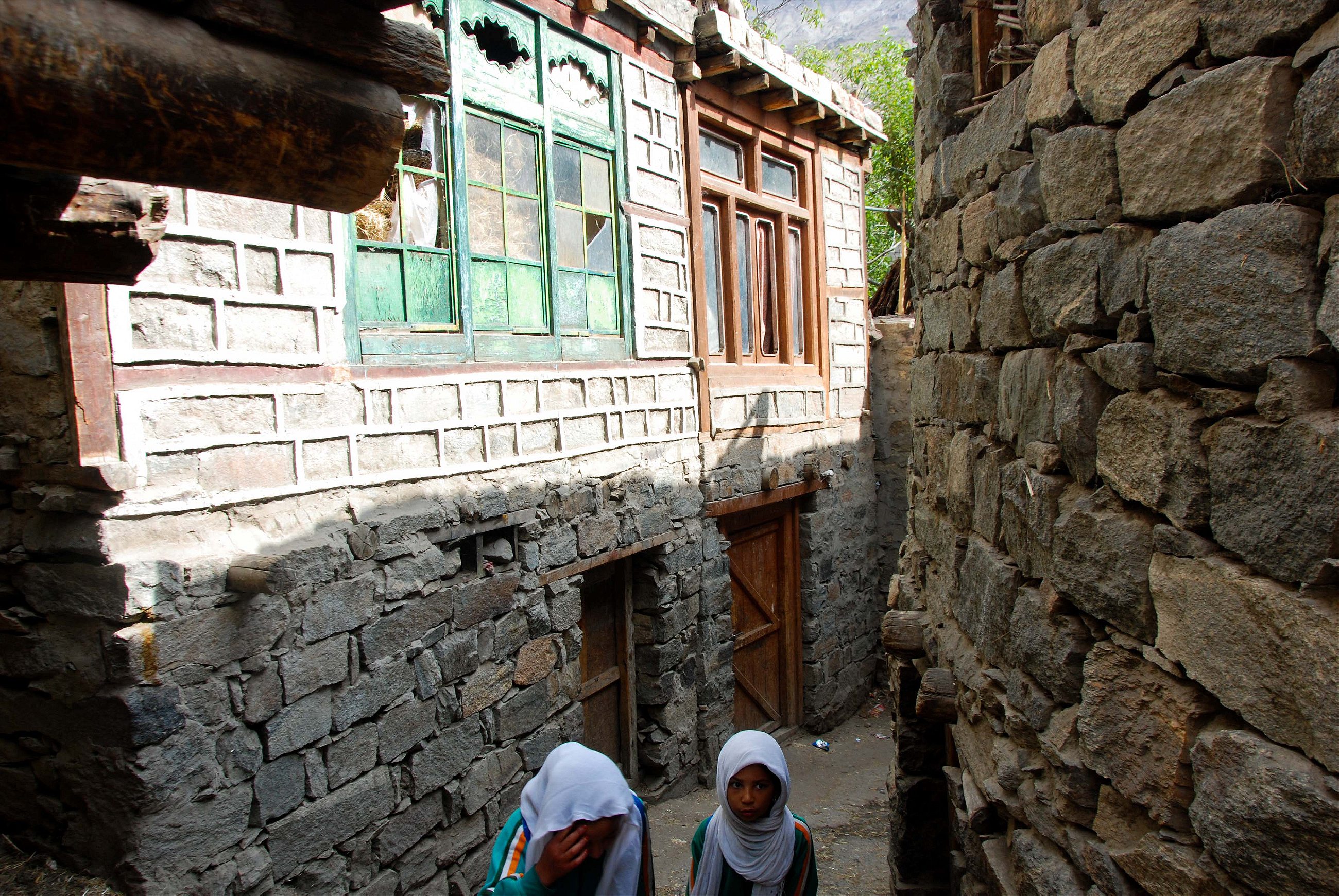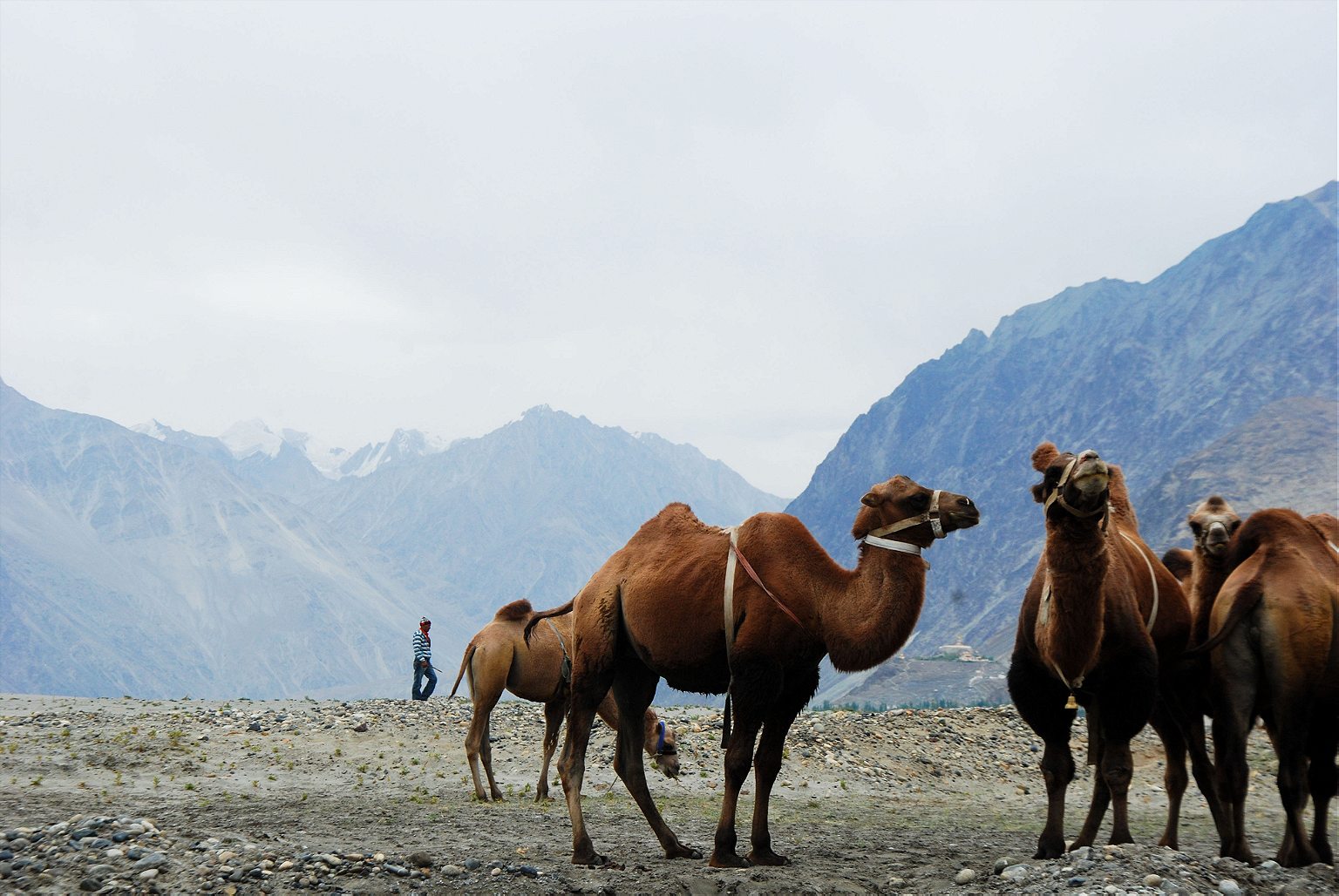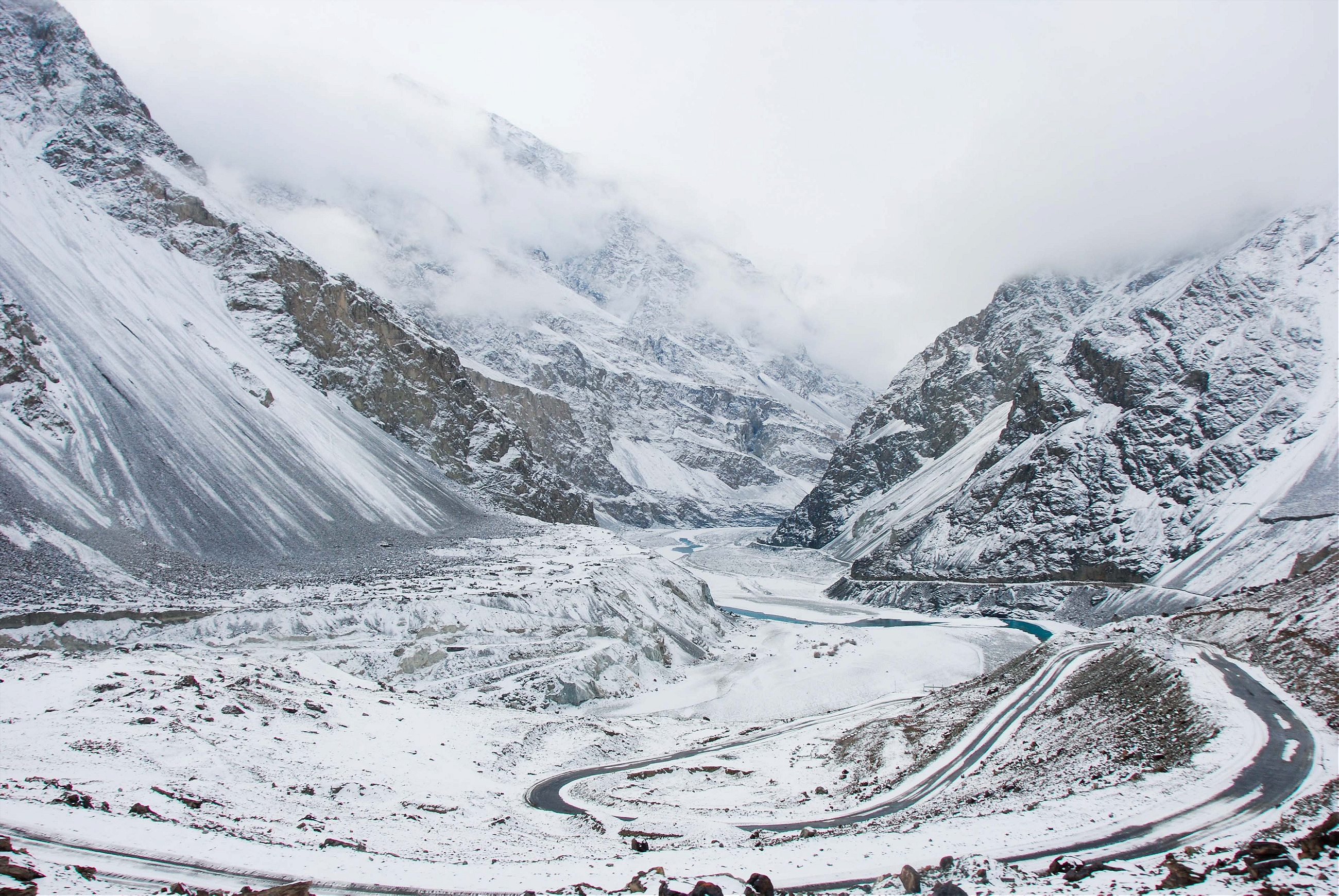Tourism is creeping toward the fraught northern border between India and Pakistan.
Winter evenings fall early in Ladakh, a region in the northernmost part of India. When we pull over, darkness has already swept through the small, picturesque village of Turtuk, which sits in the lap of the Karakoram mountain range. The muezzin calls out the evening prayers and people rush to the village mosque as we make our way in the dark. We navigate a maze of lanes to reach our destination: the only open guesthouse in the village, where Faizullah Khan, our host, opens the door.
It has been a demanding journey. Visitors to Turtuk must cross the mountains on one of the world’s highest drivable passes, the Khardung La, which is covered in snow during winter. The pass connects Leh, the district headquarters of Ladakh, to the Nubra Valley, then extends to the de facto northern India-Pakistan border.
There is something about borders that has always fascinated me. It’s a desire to see beyond the invisible lines, to discover the difference between us and them, and to witness how people live in these areas, especially one which has been branded the world’s most dangerous border. This is the border on which Turtuk sits, overlooking the Shyok River—known as the river of death—which flows into Pakistan-administered Baltistan.

A little over 100 miles from Leh, the Turtuk sector—as the Indian Army calls the region—is considered a “sensitive zone.” It was only opened to outsiders in 2010. Thyakshi and Thang, the villages closest to the current LoC (Line of Control), are still out of bounds for nonresidents. The area remained cut off from the rest of the country for decades after it was “reclaimed” by the Indian military during the Indo-Pakistani war of 1971. During the war, locals from nearby villages fled to major towns in the nearby Baltistan region. But the people of Turtuk decided to stay, remembers Haji Abdul Karim, an elder who takes care of the village mosque.
“We are where we have been for ages,” he says. “Our nationality changed but we remained the same. Earlier, we used to obey the Pakistani army, now it is the Indian army.” The people of the captured villages went to sleep in Pakistan but woke up in India the following morning.
Our guesthouse, a traditional Balti home, is owned by a local school teacher, Abdullah, while Faizullah helps in the day-to-day running of the establishment. The small house overlooks farmlands and has a distant view of the Shyok. Settling in, we struggle with the bukhari, a traditional wood-burning stove often found in Balti homes. Faizullah tells us that this is the first time tourists have come to the village in winter, probably owing to the frigid temperatures; in this northern region of Kashmir, nighttime temperatures can drop to -4F. But the guesthouse promises hot showers (a luxury in the sub-zero temperature) and delicious food.

Faizullah keeps up a continuous stream of chatter, telling us about the legends and culture of the Balti people, stories of how they survived during the Kargil War in 1999, when shells fell on their village. His favorite is a story about a yak that stepped on a land mine and was blown up when it tried to cross the border. Borders are for people, he says, not animals. He talks about lakes as blue as sky hidden deep in the Karakoram Range, a day’s trek away, where one can spot alpine goats or Ibex and sometimes, if one is lucky, a snow leopard.
Winters are dry in these parts, the trees draped in brown leaves, the roads desolate, with only the magnificent turquoise Shyok lending a hint of color as it snakes through the landscape. This wasn’t the scene I encountered when I first saw Turtuk on a bike trip few months ago. Summer in Turtuk is bright and colorful, a respite from the brown shades of the barren mountains all around. Surrounded by lush, green fields of buckwheat and barley, Turtuk looks like an oasis. Nearby, the roaring torrent of the Shyok rushes to converge with the mighty river Indus in Pakistan.

In summer, locals can be seen carting huge bundles of barley on their backs or drying apricots on roofs. The Balti villages, due to their remoteness, are almost entirely self-sufficient, growing crops in summer and eating stored food in winter. While in Turtuk, we sample authentic Balti cuisine: bread made of buckwheat called kisir topped with yak meat; yogurt flavored with local herbs and chutney made of locally grown tomato and garlic. In Turtuk, dessert means apricots: fresh apricots, dried apricots, or a syrupy preparation of fermented apricots.

Turtuk is comprised of twin hamlets, Youl and Faroul, which are divided by a mountain stream. The women seem to take care of everything—from household chores to working in the field—while the men idle around, perhaps getting up only after the muezzin’s call from the mosque. This place is home to around 500 families, mostly reliant upon agriculture, donkeys that are rented to the army, and now, increasingly, tourism.
The area, which many different cultures call home, holds a number of attractions for visitors. A plaque outside of a beautiful old mosque in Youl—the minar built entirely of latticed wood—claims that its first restoration took place in 1690. It was just a platform with four wooden pillars and ceiling panels carved from wood before that restoration, Abdul Karim tells me. Then there is the monastery on a nearby hilltop that serves as a viewpoint for K2 or Mount Godwin-Austen, which is visible far across the border when the skies are clear.
In between Leh and Turtuk, is Hunder, a village where tourists flock to see the sand dunes of the cold desert and the two-humped Bactrian camels. The camels native to central Asia are believed to have reached the valley through a branch of the erstwhile Silk Road that connected Leh to Central Asia through Gilgit. There is an end-of-the-world feel beyond Hunder, as one takes the road that weaves through the Nubra Valley along the Shyok River and towering Karakoram Range on the side. Turtuk is a place for those who are looking for something fresh and enchanting.

As you leave behind the monasteries and prayer flags and enter the village of Bogdang, the change is striking. The villagers here are fair and rosy-cheeked with aquiline features. Locals claim that they are of Aryan descent with Central Asian and Tibetan roots. While Ladakh is essentially a Buddhist-dominated area, Turtuk follows Islam. The area is home to a population of Nubakshias, the followers of the Sufi-Shiite order of Islam, as well as Sunnis and Shias. On my earlier trip, we met a few Ahle-Sunnat Jamaat representatives from the disturbed area of Kashmir, camping in the mosque and propagating their version of Islam among Baltis, who are predominantly Nurbakshias.
The Khan of Turtuk, Mohammad Khan Kacho, can trace his genealogy back to 1000 AD, his family history mirroring that of the region. He is a descendant of the Yabgo dynasty, which ruled this region before the 16th century. Once the second-largest kingdom in the region, the Yabgo dynasty monitored a section of the Silk Road connecting Ladakh to Kashgar and Samarkand (now in China and Uzbekistan, respectively). Although linguistically connected to Tibet, Baltistan and Ladakh share a cultural and historical affinity with Muslim-dominated Central Asia. Written records record Baltistan as a Buddhist region until the 13th century; one can only speculate when the region converted to Islam.
The region became a part of the Jammu and Kashmir states under the Dogras, who ruled it for over a century. Later, Pakistani forces occupied it in October of 1947 after the partition of India and Pakistan. It has remained under the control of Pakistani forces since then, until a thin slice of Baltistan was won back by India in 1971.

After the war, the Baltis, faced decades of suspicion regarding which side were they on. After all, did they not have relatives in villages merely miles away that remained part of Pakistan? There was no development, no roads or bridges to connect them to India. Much later, to win the hearts of the locals, the army began a sadbhavna (goodwill) project focused on bringing development in the border regions. Schools were opened, vocational training centers established, and young men were offered jobs. On January 26 every year, when India celebrates its Republic Day, everyone gathers to hear the announcements of the Indian army. But for years, village elders didn’t allow young men to join the Indian army or police force, fearing their fate should Pakistan take control of the village again.
It is difficult to imagine how life here changes along with the border. The village elders we met said that hundreds were left behind in Pakistan that winter night when the village was taken over by Indian forces. Children were separated from parents, siblings from one another, and wives from husbands; their return would be impossible. Even if one is lucky enough to get a temporary visa, to pass through the excruciating bureaucratic and security channels of the two countries means traveling hundreds of miles to reach a village just a few miles away.
Listening to the stories of partition, it strikes me that the borders I am so fascinated by are given such importance precisely because of how easily they cease to exist.